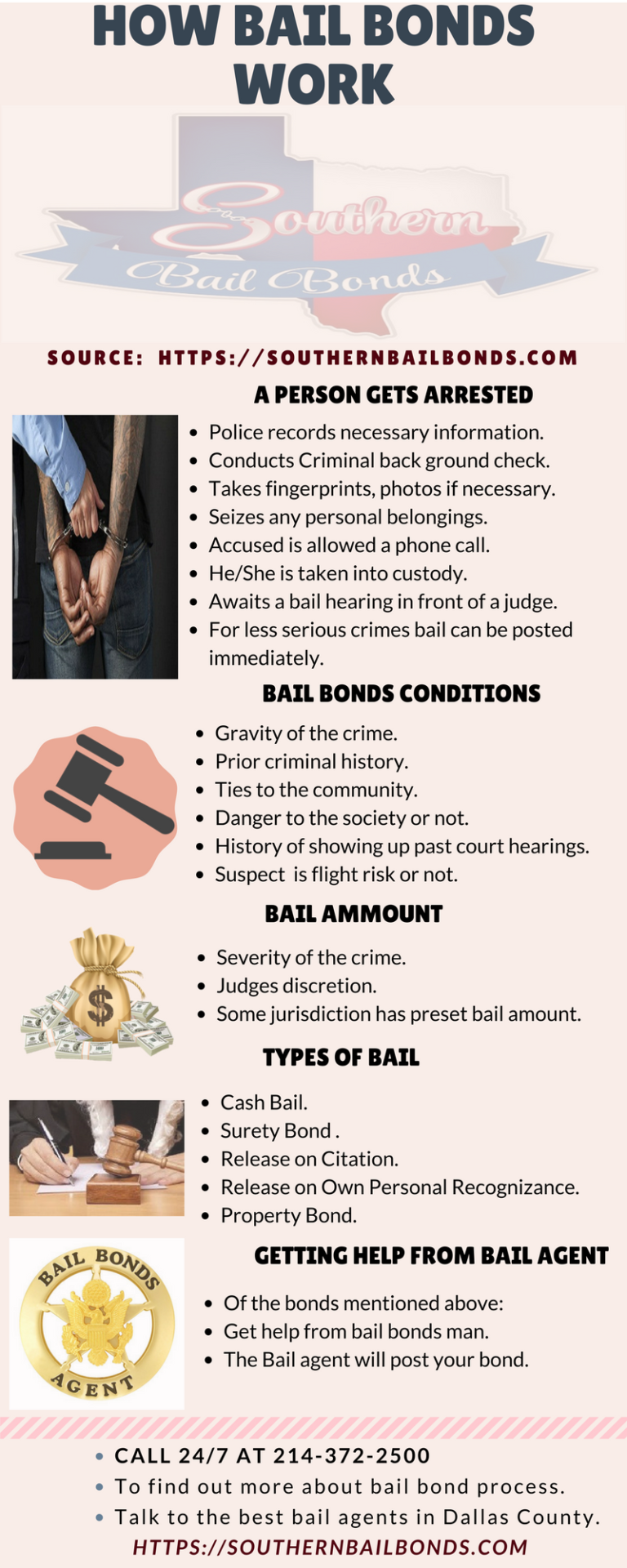Exactly How Bail Bonds Function and Their Role in Wrongdoer Justice
Bail bonds work as a crucial monetary device within the criminal justice system, assisting in the short-term release of accuseds while they wait for test. This procedure entails a bail bondsman billing a charge to protect a bond, which makes certain the court that the defendant will certainly appear for their set up hearings. While these bonds intend to maintain the concept of presumed innocence, they also spark vital discussions bordering problems of equity and gain access to, specifically for low-income individuals. As the landscape of Bail reform evolves, the ramifications of these devices necessitate more examination.
Introduction of Bail Bonds
The concept of Bail bonds functions as a vital mechanism within the criminal justice system, assisting in the momentary release of individuals waiting for trial. This system operates on the concept that defendants need to not be unnecessarily restrained prior to their court look, provided they position no significant flight danger or risk to public security. Bail bonds enable accuseds to safeguard their release by providing a monetary guarantee, guaranteeing their visibility at succeeding court days.
Bail can be set by a court, that takes into consideration various elements, including the severity of the alleged infraction, the accused's criminal background, and community connections. If an accused can not pay for the complete Bail quantity, they might look for help from a bondsman, who usually bills a non-refundable fee, typically around 10% of the total Bail. In return, the bondsman presumes the threat of the offender failing to appear in court.
The bail bond system is not without its criticisms, as it questions regarding equity and access in the justice procedure. Many argue that the dependence on monetary conditions for launch overmuch influences low-income people, potentially aggravating social inequalities within the legal framework.
The Bail Bond Refine
Browsing the bail bond procedure includes numerous essential steps that both defendants and their households need to comprehend. At first, after an apprehension, the court will certainly establish a bail amount based upon the seriousness of the fees, the offender's criminal history, and the viewed flight danger. As soon as the Bail amount is developed, accuseds or their families can come close to a bail bondsman for aid.
The next step is to provide the bondsman with needed info, including the offender's details and the Bail quantity. The bail bondsman will generally charge a non-refundable cost, typically a percent of the overall Bail, which is mandated by state laws. In exchange, the bail bondsman problems a bail bond to the court, protecting the offender's release from safekeeping.
Upon launch, it is essential for the accused to stick to all court looks. Failing to do so can lead to the forfeiture of the bail bond and possible legal consequences. Throughout the process, clear communication with the Bail bondsman is vital to guarantee all requirements are satisfied and to assist in a smooth transition back to flexibility while waiting for test.
Kinds Of Bail Bonds
Bail bonds can be classified into a number of types, each providing and serving distinctive purposes to different scenarios. One of the most common type is the surety bond, where a bail bondsman provides the court with a guarantee for the full Bail amount for a fee, typically around 10% of the Bail. This is beneficial for defendants that can not pay for the whole Bail amount upfront.
One more kind is the money bond, which calls for a family members or the accused member to pay the full Bail quantity in money to the court. If the offender stands for all court days, the cash is reimbursed after the situation ends, minus any type of costs.
Home bonds involve using property as security for the Bail amount. If the defendant stops working to appear, the court can seize the home. There are migration bonds especially for non-citizens apprehended by migration authorities, allowing for their launch while waiting for hearings.
Each type of bail bond supplies different monetary ramifications and risks, enabling defendants to browse the intricacies of the criminal justice system in such a way that finest matches their scenarios.
Impact on Families and offenders
Understanding the different types of Bail bonds is vital for understanding their broader influence on defendants and their family members. The Bail system typically places substantial monetary pressure on individuals and their enjoyed ones, particularly when money Bail is required. For lots of households, safeguarding the funds for click here to read Bail can bring about monetary difficulty, forcing them to divert resources from essential needs such as housing and education and learning.
Additionally, the psychological toll on offenders and their families you can check here can be extensive. The unpredictability bordering court dates, potential imprisonment, and the stigma of a criminal fee can develop long lasting stress and anxiety and stress and anxiety. Families may experience a sense of isolation as they browse the intricacies of the legal system, typically feeling not really prepared for the challenges ahead.
Families may sustain substantial prices when utilizing bail bond services, including charges that can get to up to 10% of the Bail amount. Hence, the effects of Bail bonds extend far past the court room, influencing the social and financial material of families involved.
Existing Discussions on Bail Reform
In the middle of recurring conversations about the justice system, current debates on Bail reform have garnered considerable attention from policymakers, supporters, and the general public. The key emphasis of these disputes is the integral injustices in the cash Bail system, which critics say disproportionately impacts low-income individuals and communities of shade. Supporters for reform compete that the present system perpetuates cycles of destitution and imprisonment, as many defendants are incapable to pay Bail and continue to be incarcerated pre-trial, usually leading to job loss, household disruption, and damaging legal end results.

As numerous jurisdictions explore alternatives, such as danger evaluation tools and pre-trial solutions, the conversation remains to develop. The find effects of these reforms are far-ranging, requiring a careful balance between making certain justice and preserving public security.
Conclusion
Bail bonds serve a substantial feature in the criminal justice system by facilitating short-term release for defendants while waiting for trial. Recurring arguments pertaining to Bail reform continue to stress the requirement for a more just and equitable system that attends to the variations produced by present Bail practices.

The most usual kind is the surety bond, where a bail bondsman offers the court with an assurance for the full Bail quantity in exchange for a charge, typically around 10% of the Bail. The Bail system often positions significant economic pressure on individuals and their enjoyed ones, particularly when money Bail is needed. Families may incur substantial costs when using bail bond services, including fees that can reach up to 10% of the Bail quantity.